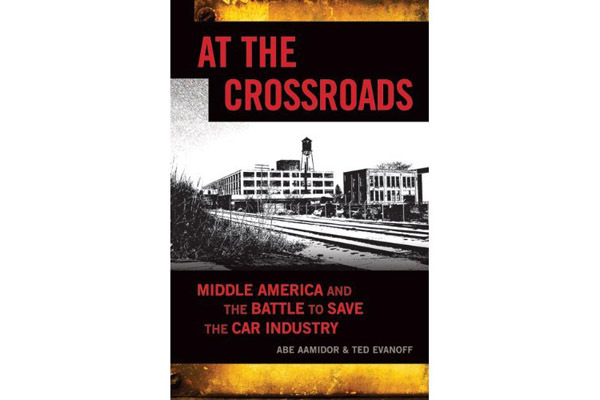Cars and the Crash

By Jackson Holahan
Although Howie Long’s NFL playing days are over, Chevrolet has enlisted the crew-cut former defensive end to put a fresh face on its newest commercials. Despite being built like a truck, Long does not sing the praises of Chevy’s lauded workingman’s pickup. Instead, he calmly informs viewers that Chevy boasts the most fuel-efficient automobile fleet on the road today, even better than perennial competitors Toyota and Honda.
Although Chevy trucks were known as the “longest lasting, most dependable trucks on the road,” rising gasoline prices and the credit crisis of 2008 were about to render General Motors, Chevy’s parent company, bankrupt. The “once-triumphant, no-longer-made trucks on the road” seemed most likely to become the company’s new motto.
But such a fate was not in the stars for either GM or its Detroit deputy, Chrysler Motors. In swooped the United States government with a massive bailout package intended to rescue the two sagging firms. Abe Aamidor and Ted Evanoff, both veteran newspaper reporters at the Indianapolis Star, chronicle this precipitous moment in "At the Crossroads: Middle America and the Battle to Save the Car Industry."
More than a just a redaction of Detroit’s bailout, Aamidor and Evanoff traveled extensively throughout rural Indiana to understand how towns like Marion and Kokomo — with economies built on jobs tied to the US auto industry — are (or are not) surviving the great recession. They encountered mayors like Wayne Seybold and Greg Goodnight, who outline the mundane, pragmatic steps that they have instituted to overcome the sizable budget shortfalls that face their towns.
The off-shoring of auto factories, restructuring of union contracts, and flight of the educated class from cities like Kokomo have led to unemployment levels in central Indiana that far exceed national averages. The authors show the economic depressions in these small, rural cities to demonstrate that Washington’s bailout, while substantial, does not indicate the same commitment shown to its Wall Street analogue. Fearful that a collapse of the automotive industry will erode America’s industrial base, Aamidor and Evanoff worry that US manufacturing clout, so mighty and decisive during World War II, is no more.
Although they champion the workingman and everyday laborer, neither author hesitates to illustrate the self-inflicted wounds exacted at the very hands of GM's and Chryslers’ management and work force. Extravagant labor contracts saddled with very generous unemployment benefits bear part of the blame. The repeated shortsightedness of GM and Chrysler executives also deserves its fair share of condemnation. High sales throughout the 1940s and 1950s created a “never idle the assembly lines” mind-set. As long as the factories were churning out product and the American people were buying, technological innovation was no more than a peripheral concern.
The scope of “At the Crossroads” is broad because any understanding of the rise, decline, and history of government policies concerning the auto industry requires a deep inspection of diverse subjects. This book is at once an American industrial history, financial assessment, cultural analysis, economic inspection, and global forecast.
Evanoff and Aamidor’s work deserves praise for its meticulous reporting and thorough research. This book is not a light or easy jaunt through the American automotive crisis and the corresponding problems that have descended upon the increasingly global network of jobs and technology that the industry requires. The authors astutely show how the challenges of the small-town entrepreneur are directly connected to the fortunes of communities that have relied for generations, at least tangentially, on the domestic automotive giants.
The authors' primary concern is that large-scale manufacturing is quickly becoming a distant memory in this country. Much of their discussion supporting this thesis is valuable, from original anecdotes to detailed historical recounting. It is easy to lose track of the names of the several businessmen, mayors, union workers and corporate executives whom the authors intermittently reference throughout. And while their detailed accounting of the financial intricacies of Chrysler and GM’s government-orchestrated bankruptcies is at times tedious, these very figures serve as the best means of understanding the mechanics of the bailout itself.
The recent upsurge in GM’s sales, up 12 percent from a year ago, may be the first positive signs for the sagging American auto industry. Could the simultaneous safety failures on Toyota’s most dependable models mark a sea change for the prospects of a refurbished and pared-down GM? While optimists and automotive employees may perceive recent successes, however small, to be portentous of the triumphs to come, the free market, which has rarely been kind to the Detroit Three, may have the final say — if Washington ever decides to remain on the sidelines.